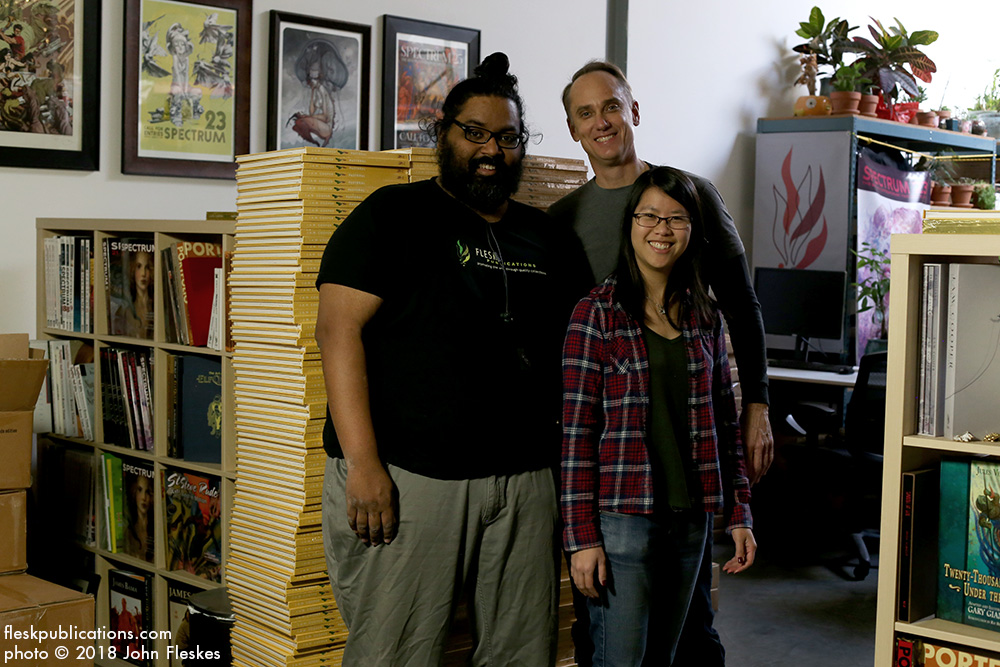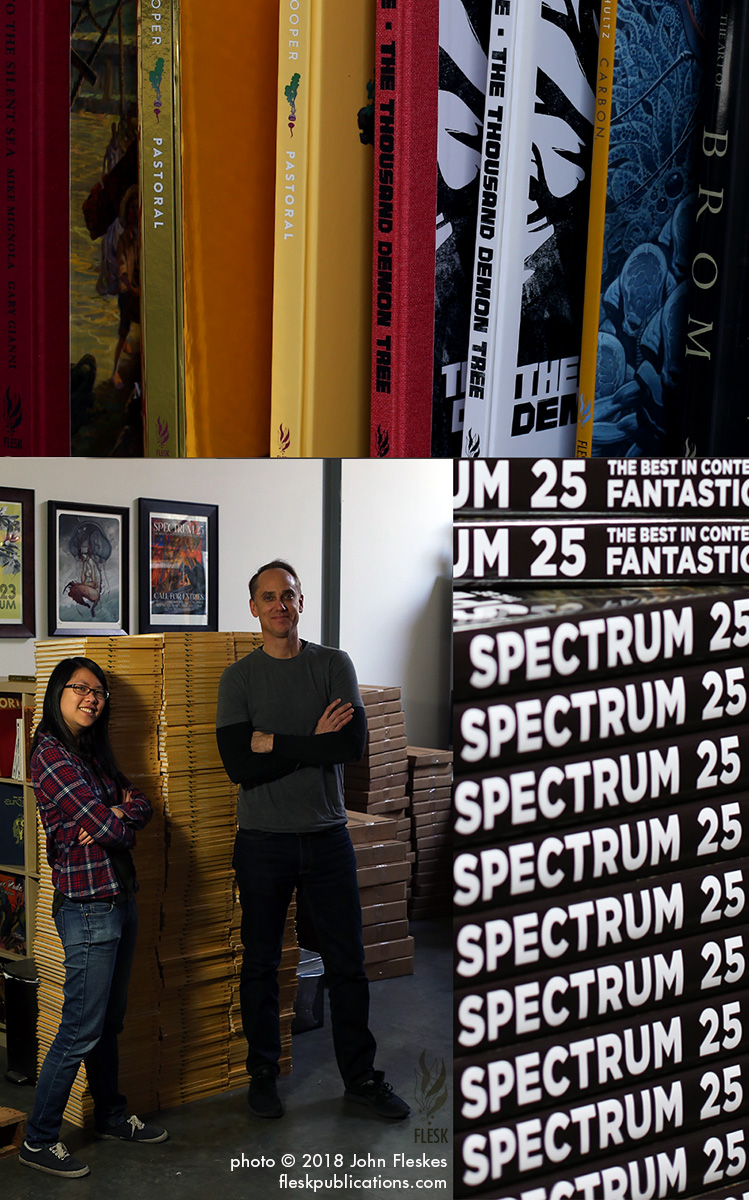
Hi all,
In January 2009 I was facing a major challenge. The Stock Market Crash was devastating to individuals and businesses. It was, hands down, the worst time to go into publishing full time. (During 2002-2008 I had a full-time day job when I launched, built and ran Flesk.) While scores of people were losing their jobs and as I watched neighbors around me lose their homes, I was determinated to go full time into publishing. When people were scared to spend, scared that they might lose their jobs, scared to lose their retirement—I was sitting at home working on the Al Williamson Flash Gordon book while putting a 10-year plan in place. I then began to follow it without question. Grit, determination, stubbornness—call it what you will. It was hard. It almost didn’t work. I came very close to losing the business. But it all worked out in the end. Here’s some insight into how it happened.
I’ll start with some background information. I tend to keep book projects under wraps for months, or even years, before they are ready for the printer. This allows me the opportunity to work at my leisure without any outside influences dictating my schedule.
It’s common practice for publishers to announce books anywhere from 8-12 months in advance of its street date to help ascertain the publics interest. This allows the publisher to determine the initial print run of the book. It’s a tried and true formula that is a historically good model to follow. This is especially necessary when working with titles that depend mostly upon the book trade for a successful sell-through. It’s also imperative if you are a new publisher. By garnering its initial demand while promoting the book months in advance you can best set yourself up for success. Or, this can be an opportunity to cancel a book if the interest looks weak, such as if I determine that the buying climate has changed.
I have a different approach to making and releasing books than most. I set my style into place in 2009. I wouldn’t necessarily recommend doing things like I do, but I have been very deliberate about creating an alternate and unique method that has proven successful for us. In 2008 I was acutely aware that the demand for tangible books, and the way that they would be sold, would be greatly affected by the mass adoption of the internet. There was also the possibility that tablets could replace, or greatly reduce, tangible book sales as e-books became more accessible. In addition, it was obvious that Amazon was changing how people bought books. Brick and mortar stores were closing because of the economy coming to a halt, but also due to the ease and accessibility of online shopping.
Huge discounts on books through Amazon contributed to publishers going into scramble-mode. When stores closed, there were less outlets for people to find our books, which meant lower print runs in a market where profit margins were already small. Lower print runs increased the per unit costs and cut back on the return of investment making it harder to recoup money and put it into future books. Another factor that came into play was it became tough to sell our own books on our website and at art shows since you could get it on Amazon at a 35-40% discount with free shipping. Adding to this, if you look at the 2008-2009 time period, there was a mass influx of returns that publishers received due to unsold stock. This increased inventory fees beyond the loss of funds from overprinting. Stores would order certain quantities in advance that set our print run. By the time we printed and delivered, those stores could be out of business, or they couldn’t sell what they had initially projected 4-6 months prior. All of those unsold books came right back to us instead of receiving a payment. It was brutal for everyone.
Another major shift in the 2000s was the lost ability for people to see the book in person and flip through its pages. This was historically the way people used to buy books. Now, people buy books more sight-unseen. Their purchase is based upon online reviews and the faith the “X” publisher, author or artist is desirable and has a good reputation. Additionally, people outside of the hardcore collectors at shows are more apt to buy items for delivery. That was not as common when I started publishing in 2002.
I’ve always been one to like challenges, to never ever make excuses, and to see what kind of positives can come out of change. I was determined to figure out a new business model that would allow us to thrive.
Ultimately, in January 2009, I believed, by creating consistently high-quality art books that people would want to hold in their hands was necessary to beat e-books. Also, creating a direct line of specialty books that could only be bought through us was necessary to beat Amazon. And finally, we needed a website with a proper shopping cart where people could place their orders direct from us while having good service and a reliable shipping system in place. I stopped wholesaling certain new titles as we launched our line of event exclusives. It only took a couple of years for them to become very popular for us.
Overall, I was excited. I knew that there was a big potential to be successful as a small publisher by doing things in a new way. The internet allowed for self-promotion through social media. Instead of paying $2000 for a full-page advertisement in a magazine, or spending thousands of dollars exhibiting at an event such as Book Expo in New York, now we could reach people directly in a one-on-one fashion. I loved where things were going and how technology was bringing us together.
I remember walking around at Book Expo in New York in the mid-to-late 2000s and realizing that the conventional way of doing things at the time was short-lived. It seemed so old-fashioned to me. I benefited from having no experience in the industry since I was not stuck looking at how things typically ran. Since I was small and a new publisher I could quickly adapt, see where the future was headed, and go after it.
To summarize quickly, in 2009 I put into place a new plan that would beat Amazon and beat e-books, while increasing a direct interaction between our collectors and ourselves. As I look back on the last 10 years, our direct sales exceed our distributor sales and we have a core group that supports us directly. The best part is that young people did not tire of tangible books. I’m incredible grateful at how things turned out for us.
How about the next 10 years? I noticed a new big shift start to develop four years ago. I started to put something new in place and am ramping up to grow along with where I predict things are going. I’ve already put things into place where I feel we will be ahead and thriving in this new world that is coming. It’s as exciting as it was for me in 2009. I’ve set some major goals for myself and for the company so that in the next decade it can hit the milestones that I foresee. I look forward to writing about it in detail in 10 years from now! I’ve never been one to boast or talk about what I’m doing. I enjoy the work and prefer to be recognized for what I’ve accomplished rather than tooting my own horn. Plus, I feel that talking too much jinxes’ things. I’ll just say for now that good things are coming.
Now, let’s touch upon 2019. Typical me, I’m going to be vague here. Besides the Ballpoint Beauties book by Frank Cho and Ambedo by Tran Nguyen (spring 2019 releases), then Spectrum 26 (fall 2019 release) we have three other books that are almost done, and three additional books that are in the early stages of production that I will publish this year. I’ll most likely be announcing two to three of these new titles in late-January. I’m working with our usual artists, along with some new ones. The only thing that I can guarantee is that we will put all our passion into these titles and do our very best to make 2019 the best ever for Flesk books. My commitment to the individual artists and this community is my focus. I’ll let the other publishers chase after the latest pop culture craze. For me, it has always been and always will be about the people.
I remain enthusiastic and grateful to be in this position to make books for you all to enjoy.
Thanks for reading. I look forward to sharing more goodness soon.
Enjoy,
John
Flesk Publications
Flesk Publications on Facebook
Spectrum Fantastic Art
Spectrum Fantastic Art Live
Spectrum Fantastic Art Live on Facebook
Text copyright © 2018 John Fleskes. Photos and videos © 2018 John Fleskes / Flesk Publications. Artwork © 2018 its respective artists. All Rights reserved.
